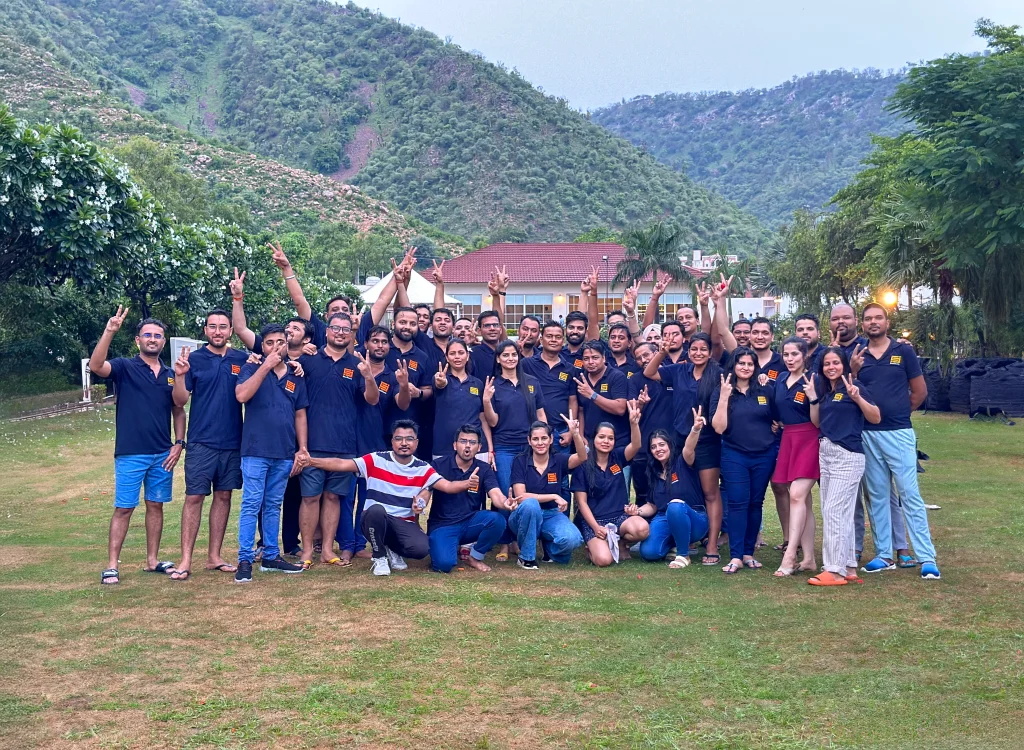What is HoReCa and Its Value for FMCG Brands?

The HoReCa market size was valued at USD 3.02 Trillion in 2023 with market revenue in this channel expected to rise to almost USD 3.88 Trillion By 2030.
Another report suggests that the HoReCa beverage market was valued at USD 155 Billion and is expected to grow at a strong CAGR of around 3.5% during the forecast period (2024-2032).
The above stats dictate that HoReCa is a giant of a channel that FMCG or consumer goods brands cannot overlook for business success.
For instance, Nestlé Professional and Unilever Food Solutions drive significant revenue from HoReCa by offering bulk ingredients and tailored solutions. Similarly, Coca-Cola and PepsiCo leverage partnerships with fast-food chains and cafes, while Amul and Britannia cater with specialized products like cheese packs and bakery items.
But what is HoReCa after all and why is it significant for the FMCG industry?
For the unversed, Hotels, Restaurants, and Cafes/Catering, collectively named HoReCa, are pivotal to the global food and beverage industry. As an important customer segment for the FMCG and consumer goods industries, the HoReCa channel demands strategies specific to them to thrive among growing competition.
In this regard, sales enablement technology is essential for optimising operations, enhancing experiences, and driving revenue in this vast but dynamic sector.
In this article, we will cover the meaning of HoReCa, how it is significant, why it is crucial in FMCG, and how brands can leverage this channel to boost sales.
What is HoReCa?
HoReCa refers to the Hotel, Restaurant, and Catering industry, which collectively represents the food service and hospitality sector. These are businesses that specialize in preparing and serving meals, beverages, and providing accommodations to guests/customers.
We further break down each component of HoReCa below:
Hotels
Within HoReCa, hotels offer accommodations, hospitality services, and meaningful experiences for guests. These range from luxury resorts to business hotels, catering to a diverse clientele/guests.
The FMCG industry focuses on supplying hotels with essential goods such as toiletries, beverages, and snacks, ensuring availability through efficient sales and distribution channels.
Restaurants
As the cornerstone of the HoReCa industry, restaurants focus on delivering culinary experiences to guests – a combination of taste, ambiance, and personalised service. From casual eateries to gourmet establishments, restaurants cover a broad range of categories and customers.
The FMCG element here is ensuring a consistent supply of key ingredients (spices, etc.), packaged goods, and beverages (water bottles, aerated drinks, etc.).
Cafes/Catering Services
Cafes are de facto social spaces that bring a unique charm to the HoReCa sector, offering beverages, snacks, and generally welcoming ambiences. From artisanal coffee houses to global chains, cafes rely heavily on FMCG products such as coffee beans, tea, dairy, and baked goods (cakes, biscuits, etc.).
Catering services include businesses or companies that handle food and beverages for parties, weddings, and events. They too need a steady supply of FMCG goods from water bottles to spices to food ingredients.
Now that we know what HoReCa stands for, let’s go into the many challenges that brands face in this channel and how to solve them.
Key Challenges in the HoReCa Channel
The HoReCa channel belongs to the hospitality industry and as such, has its own set of challenges for brands to navigate. We list and discuss these below:
- Inefficient Lead Management and Customer Onboarding
Profiling creates “personas” with pre-defined factors, helping brands understand which HoReCa establishments align with them and which don’t. Without profiling that considers location, sales potential, type of cuisine, etc., brands may end up onboarding irrelevant restaurants or cafes.
For example, if your brand is into Chinese sauces and ingredients, pitching to a Texan restaurant will be irrelevant as Chinese and American food ingredients vary significantly.
Manual lead assignment and onboarding efforts are extremely unreliable and prone to errors. There is no effective profiling and certainly no systemised lead management.
This leads to difficulty in collaborating and tracking such demos.
Manual processes generally have no dependable structure to auto-assign tasks or to definitively assign a skilled expert for a demo to drive the process forward.
- Sub-optimal Post-onboarding Relationship Management
Onboarding a customer successfully isn’t enough. To ensure repeat business, brands need to nurture their relationships with customers. The absence of an integrated system that handles both lead management and relationship management can lead to communication gaps, dissatisfactory service, and even missed opportunities for upselling or cross-selling.
Most field sales tracking apps meet either one of these requirements. As a result, sales teams end up using two separate tools/systems or only a part of their workflows are digitised by the deployed system. This also negatively affects a brand’s ability to build long-term loyalty.
- Ineffective Visit Hygiene
While it’s necessary to keep track of where your sales teams are going, you must also ensure that these visits are productive. Not keeping track of your visit routine can lead to inconsistent customer experience, missed-follow ups, missed opportunities in key accounts and over saturation of visits. Selling to customers in the HoreCa channel often involves potentially complex sales cycles that are a mix of telephonic and physical interactions.
Without a systemised track of visits and workflow, maintaining visit hygiene becomes hard. This causes diminishing sales outcomes by sales reps leading to reduced revenue from these channels.
- Manual Ordering and Lack of Transparency
Manual ordering happens over a telephone or face to face where order details are noted down on a piece of paper. This is a highly unreliable method of doing business as notes can be misplaced and orders messed up. The same goes for any schemes associated with them.
Additionally, delivering products in the HoReCa channel necessitates highly efficient logistics and distribution, especially when the items being delivered are perishable and time-sensitive. This is very hard and unreliable within a manual setup, requiring constant monitoring.
The lack of a transparent system to track orders and dispatches further adds to miscommunication and a lack of accountability in the supply chain.
- Product and Scheme Communication Failure
If your customers are unaware of new products or flavours, they are not going to place orders for them. Most times your sales reps introduce the product to potential HoReCa outlets during visits, leading to loss of valuable time, time that could have been spent productively.
The lack of a digital system to communicate between sales reps and your customers about new product launches and schemes creates a gap in your sales funnel.
Without sales force automation in HoReCa, your sales reps have to memorise and apply schemes manually, making the process prone to errors, whereby you run the risk of sales loss and customer dissatisfaction.
Your sales rep may be assigned to visit dozens of cafes or maybe you have a large variety of products that have unique schemes associated with them. Without an SFA tool, it is near-impossible for a human mind to ensure that the right items for the right establishments are pitched with the right schemes every time.
Solutions to Key Challenges in HoReCa
Now that we are clear on the different challenges that brands experience in the HoReCa channel, let’s go into the solutions!
These are listed in the following points:
- Digitise Lead Management and Onboarding
Digitising lead management and customer onboarding systems streamlines your sales processes, ensuring accurate profiling, lead assignment, task tracking, and more.
By using pre-defined factors such as location, sales potential, and cuisine type, a field sales app can ensure that all onboarded customers align with customer personas relevant to the brand’s offerings.
You can automate lead assignment, schedule demos with technical experts for customers, and track pipeline progress in real time, eliminating reliance on manual processes and reducing delays.
This structured approach enhances efficiency, improves response times, and ensures seamless onboarding for HoReCa establishments that align with the brand’s offerings.
The right tools enable you to auto-assign leads from the start to the relevant stakeholders at every stage of the process until a lead becomes a customer.
The co-working mechanism between the sales team and technical experts during demos is a prime example of collaboration towards common goals, something that we strongly advocate.
- Implement a Unified System
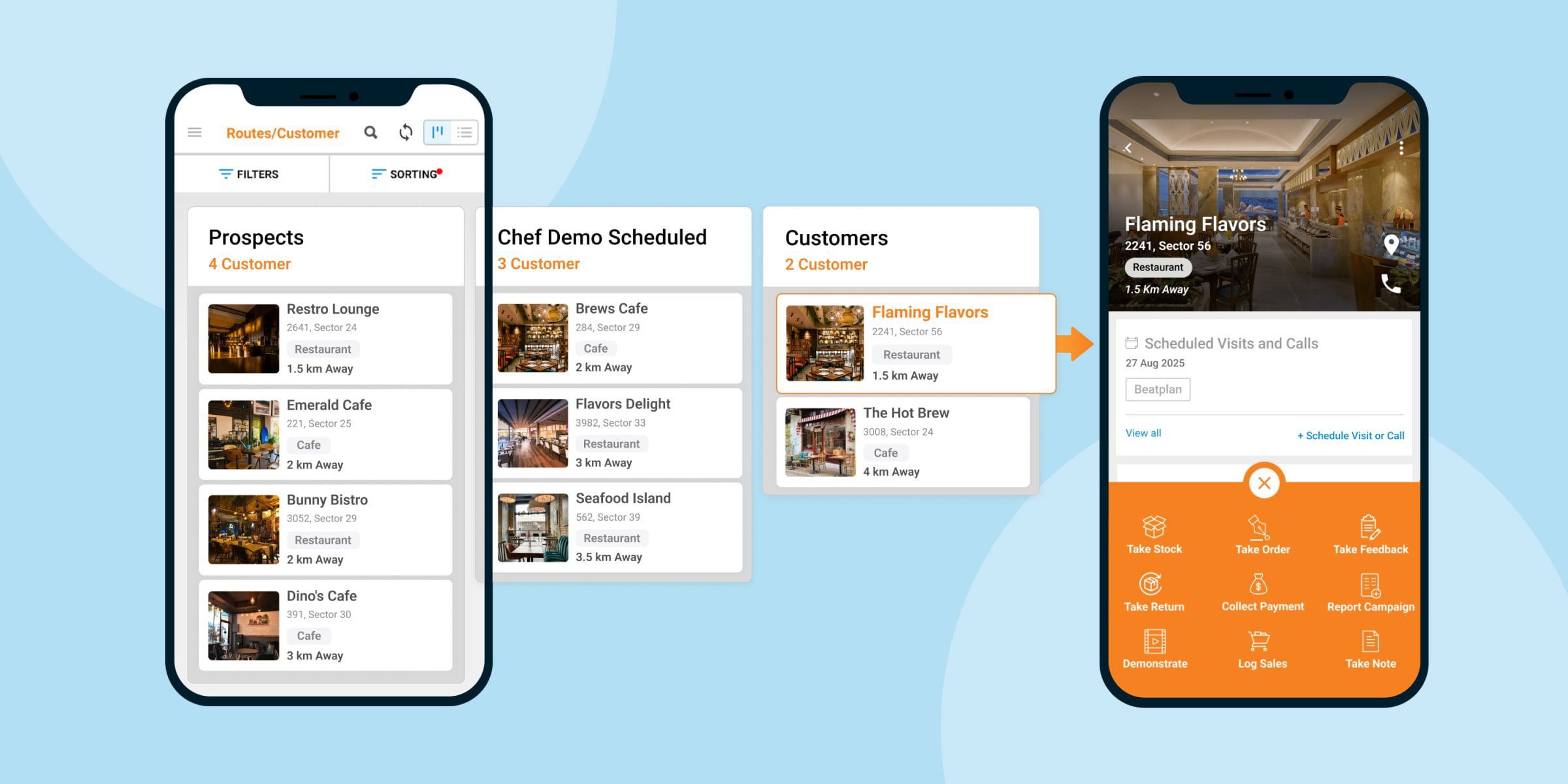
Integrating lead management and relationship management in a single platform can ensure effective post-onboarding customer experience and long-term loyalty.
By centralising customer data captured during the lead generation phase, the field sales app enables sales teams to proactively address customer needs, deliver personalised assistance, and identify upselling or cross-selling opportunities.
A unified system eliminates inefficiencies caused by siloed systems, encourages consistent communication, and strengthens customer relationships, driving repeat business and sustained loyalty.
This allows sales reps to focus on meeting their targets, while ensuring timely visits and better pipeline management. As for managers, the tool enables them to monitor sales activities, spot any problems (such as missed visits, poor performance, or process gaps), and take prompt action to correct them before they escalate.
- Ensure Visit Hygiene
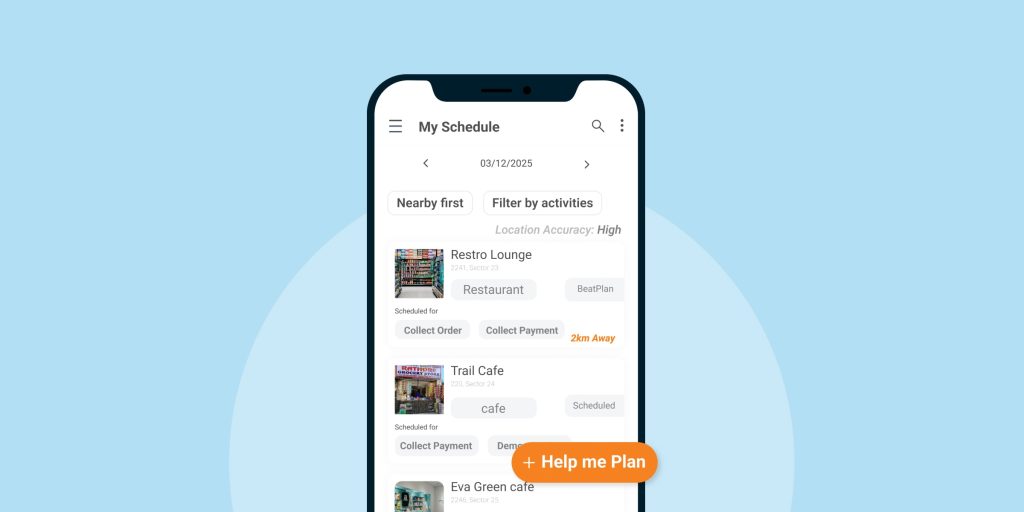
A dependable visit management system ensures visit hygiene for sales reps by tracking them, planning productive interactions, and streamlining workflows.
Modern digital solutions leveraging AI can help brands identify customers in the HoReCa channel that have the potential for long term purchase. This drives up efficiency in the sales teams, improving revenue.
Also, reporting and analysis from such a system allows sales managers to address problems that require their attention.
- Enable Customers to Place Orders Digitally
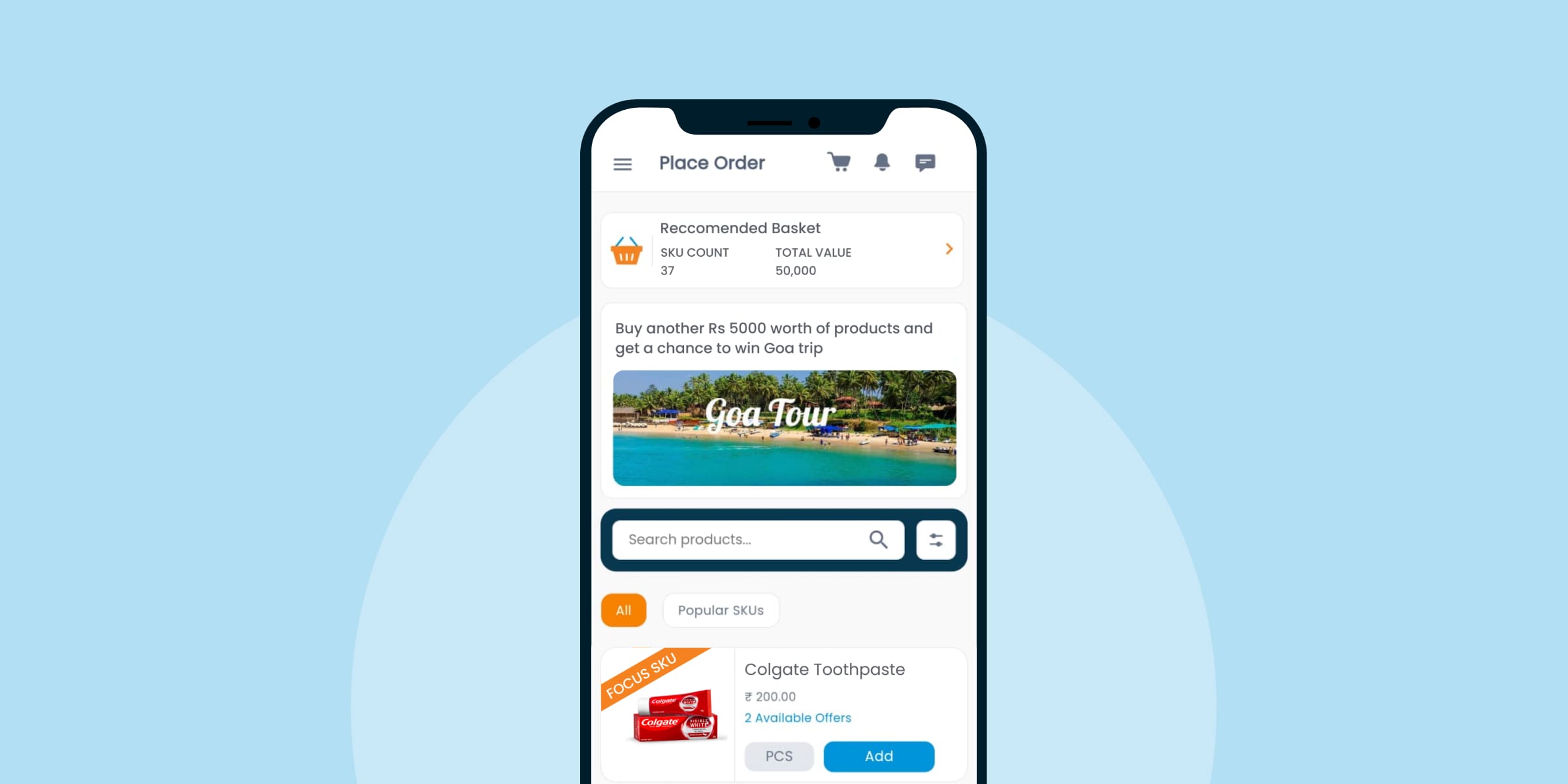
Digitizing the ordering process, both at sales reps’ and customers’ ends, ensures that users can see what they are ordering, the schemes associated with them, and status of the order.
This makes the ordering process smooth and transparent, ensuring customers are aware of what they are ordering and what’s happening until fulfillment.
Consider this scenario about enabling customers – A cafe that services numerous customers on a daily basis cannot afford to run out of coffee beans. Yet, a sudden surge in customers results in a rapidly depleting stock that won’t last more than a couple of days more.
The sales rep is not due for another week. Rather than be a cafe with no coffee, they will either try to contact the sales rep via phone or simply buy from a competitor, if that’s faster.
This is a risk you don’t want to take and equipping the cafe with an app where they can self order as needed does two things – keeps them loyal to you and keeps the revenue inflow intact.
- Drive Clear Communication
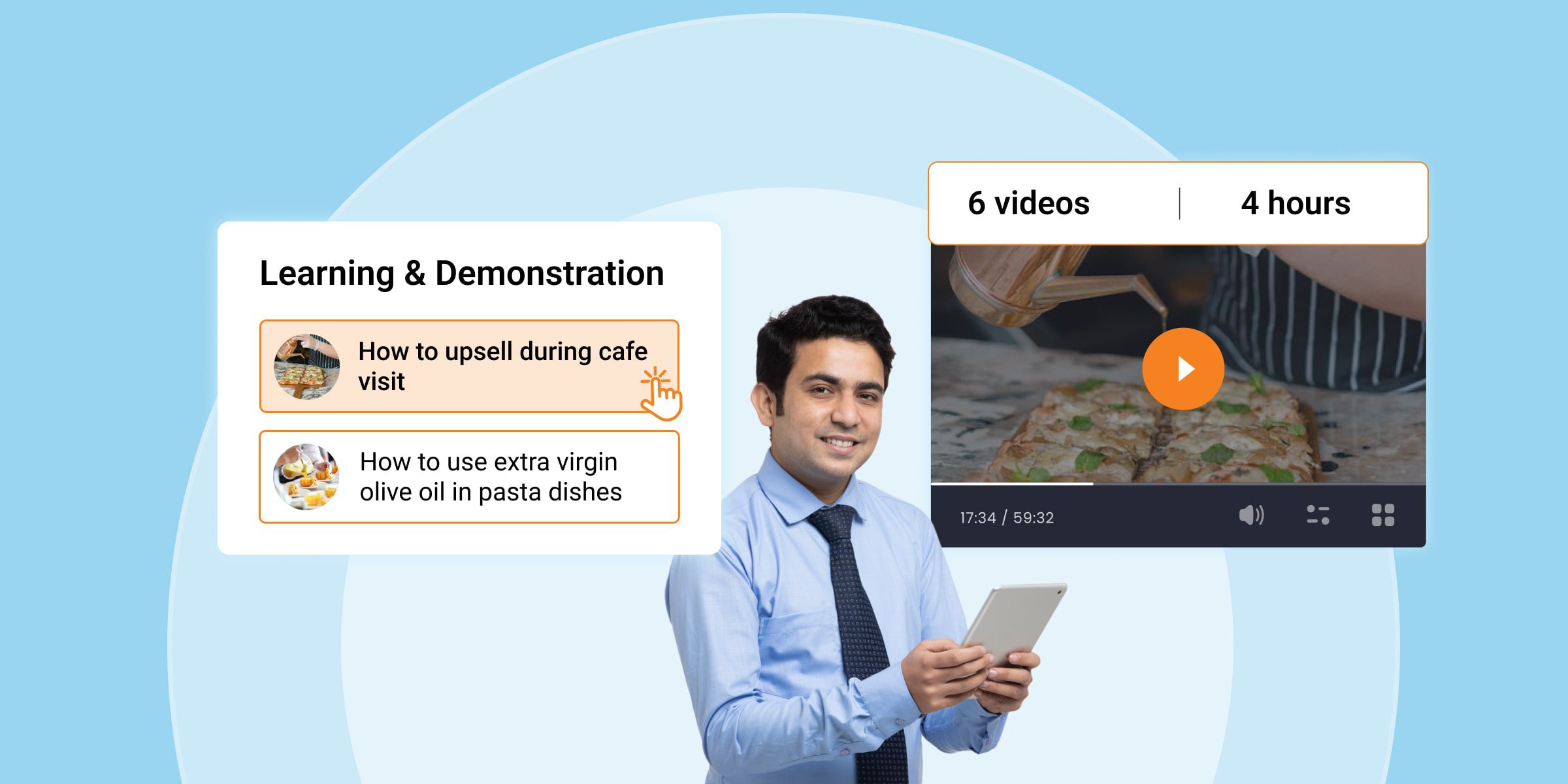
Deploying a digital sales enablement platform with multimedia capabilities allows HoReCa customers to check out product launches and educate themselves.
Sales reps can also access detailed product and scheme information tailored to each establishment, ensuring efficient pitches.
With this, sales reps can focus on building relationships and driving conversions, maximising productivity across customers. Additionally, automating scheme applications further minimises errors and prevents sales loss.
Best Practices in the HoReCa Channel
Like any other channel, HoReCa too has best practices that must be followed or aligned with in order to ensure success. These are not simply suggestions but strong recommendations on how brands can stay on top when operating in this channel.
Here is the list of best practices for you:
- Technology Adoption
Brands must keep upgrading their systems, i.e. upgrade their technology periodically. If you are running a modern field sales team on a legacy system, your bottomline will never be at par with others in the market.
For example, if your sales team is still using two different apps for visit tracking and lead management, chances are that they are wasting time switching between the two or are unable to use them as efficiently leading to errors, communication gaps and broken customer experiences.
This is where you need to implement a unified system that could seamlessly integrate both visit tracking and lead management into a single platform.
- Customer Profiling
Profiling your customers is important because the same strategy won’t work for everyone. For example, you can’t expect to push a super-expensive and premium product tailored for 5-star luxury hotels to a small-time cafe. Profiling using custom attributes allows businesses to segment and target customers more effectively.
By defining specific attributes—such as business type, purchase capacity, location, product preferences, and buying behavior—sales teams can categorize customers into meaningful groups. This targeted approach ensures that marketing strategies, product offerings, and sales pitches are aligned with each segment’s unique needs.
For example, a premium product can be marketed to high-end clients, while budget-friendly options can be directed toward smaller businesses.
- Understanding Customer Psychology
It is important that you capture and document sales data to understand what your customers want and are potentially going to keep buying. This understanding of their headspace is what separates the good brands from the great and mitigates wastage of resources and time.
For example, a luxury resort catering to high-paying clients would not buy small quantities of toiletries for their washrooms but actually buy top-end products in bulk to meet the requisite quality and quantity of their establishment. Wasting your time pushing anything else to these establishments would simply be a futile exercise and also affect your reputation as a competent brand.
- Demo Team Visits
In the HoReCa channel, brands often have their chefs demo products in customers’ kitchens to showcase quality and application. This is usually done ad-hoc, with sales reps informally coordinating visits via calls or messages.
This lack of planning leads to several issues: important details can be overlooked, such as specific customer needs or preferences; there’s no proper tracking of these visits, making it hard to measure their impact; and without a systematic approach, brands risk missing valuable sales opportunities, reducing the overall effectiveness of their customer acquisition efforts.
- Gamify Sales Goals
Align your goals with those of your sales reps and/or customers on the field. Look for SFA tools that offer full goal visibility to sales reps like achieved milestones, points to be accumulated for the next milestone or reward, score card of their performance, etc. This incentivises them to go the extra mile and put their best foot forward every single day.
- Repeat Sales Rep Visits
It is not enough that a HoReCa customer has taken up your product; a brand-customer relationship needs to be constantly nurtured. Consistently engaging customers with physical visits keeps a brand and its products fresh in their minds.
Additionally, customers may have problems or expectations that they may want to discuss with a sales rep apart from ordering, that are not as effective over a digital platform. Systemised visit planning that prioritises visits based on urgency (such as a pending payment or a sales slump) further ensures that these visits are not just effective for relationship building but also productive.
- Keep Customers in the Loop
Alleviate your customers’ concerns by keeping them apprised of what’s going on with a complaint they raised or an order that’s delayed. It is not enough to simply quote a TAT but more important to show them or inform them of the steps in between. When your customers are aware of how well something is being handled, they turn into brand advocates and make repeat purchases.
Conclusion
According to Maximize Market Research, food expenses in the average Indian household is expected to rise from 29% in 2023 to 35.4% in 2025, leaving more disposable income for indulging in staycations and dining out. This growing demand means hotels, restaurants, cafes and catering services will need more food, beverages, toiletries, etc. going forward.
Additionally, emerging trends such as sustainability, digital transformation, and the growing preference for healthier options are reshaping the HoReCa channel. For brands, the integration of loyalty programs and partnerships with HoReCa entities can deepen customer engagement and loyalty. Staying ahead of emerging trends and developing partnerships is crucial to securing a competitive edge in this dynamic market.
BeatRoute‘s goal-driven sales tech transforms your sales operations by aligning every action with clearly defined business goals. Contrary to traditional systems, BeatRoute focuses on outcomes through AI-driven insights, intuitive workflows, and smart automation.
It empowers users with real-time data and actionable insights, ensuring that every stakeholder in your supply chain works together towards a common goal, delivering high ROI and growth for brands.
For perspective, find out how we helped Cremica, one of our valued customers, to gain visibility into their field sales operations in HoReCa and other channels.
To learn more about our platform capabilities in detail, take a free demo!
About the Author
-
Apart from being a Senior Content Writer at BeatRoute, Soham is an avid reader of science fiction and suspense novels (Doyle, Christie, Brown or anybody great!) He also dabbles in historical narratives and wonders about our place in the universe. Cosmic viewpoints, Carl Sagan, and Neil deGrasse Tyson intrigues him. When not reading, you may find him spending his weekends or after-work hours watching a fulfilling movie with his family.
Use Goal-Driven AI to Achieve Retail Sales Uplift, Today!
Join enterprises in 20+ countries that trust BeatRoute, the globally dominant AI platform for sales force automation, field sales, DMS, and eB2B
Latest Insights & Articles
Here are the most impactful articles, platform updates, ebooks and reports for you.



